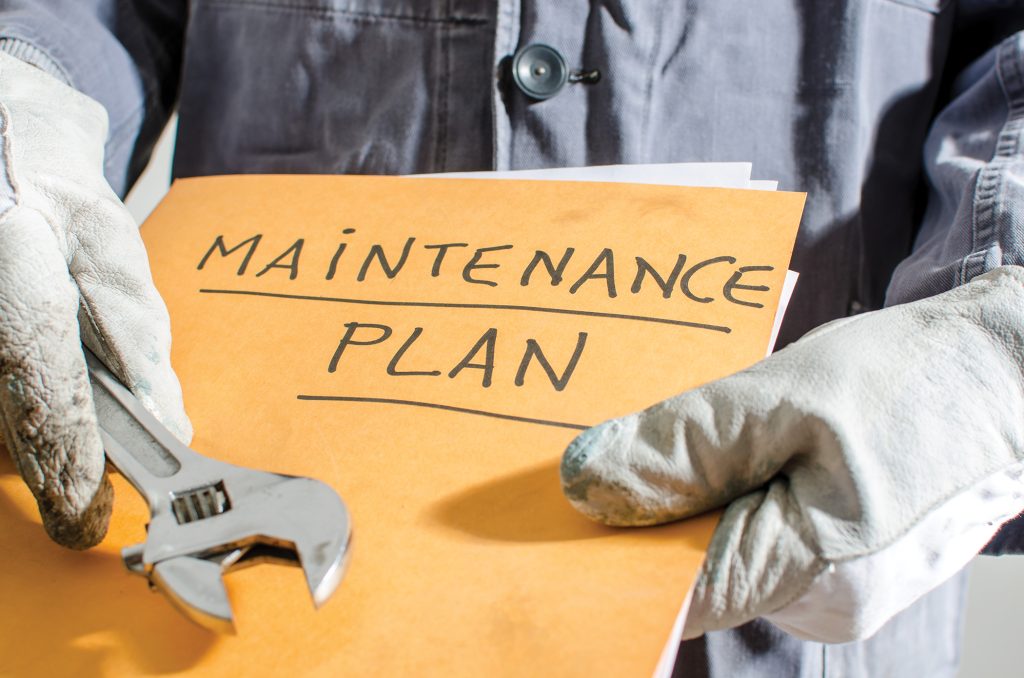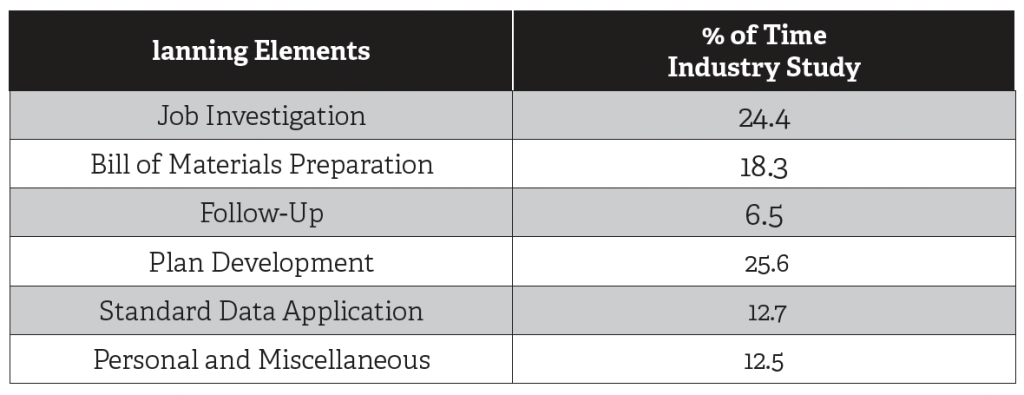
The role of a maintenance planner
How to analyze work order activities to ensure there is a strong planning process implemented within the maintenance department.
November 19, 2021 | By Peter Philips
 Photo: thodonal / Adobe Stock
Photo: thodonal / Adobe Stock 
Photo: thodonal / Adobe Stock
This issue is the start of a series of articles outlining the critical duties of five positions within the maintenance department. The positions include the planner, storekeeper, supervisor, tradesperson and the maintenance manager.
I am starting with the planner because this position holds the key to the inner workings for the planning of work and the work order flow process. The position requires a great deal of attention to detail and intertwines the other four maintenance roles, and therefore, is the pivot point of most maintenance activities.
To start, however, we may want to analyze the current work order activities to ascertain if there is a robust planning process within the maintenance department. We need to ask how do we know if our planning system is broken?
Symptoms of a broken planning system
The problem
In order to understand and appreciate maintenance planning, it is necessary to acknowledge that “all maintenance jobs are planned.” As long as facilities are maintained and the maintenance and repair work are needed, this statement will be fact.
In the absence of a planner, the function may be the responsibility of craft foremen, who may perform the planning role, in addition to supervising craft personnel. In other instances, the craftsmen do their own planning after receiving the assignment from their foremen. The engineering department, with appropriate drawings and bills of material, may plan technically complicated or high-cost jobs. The most common practice usually involves a combination of these methods with varying degrees of success.
Obviously, the size and complexity of a maintenance department must be considered in any approach to maintenance planning. Management and control of a small maintenance group, of five or less crafts people, can be accomplished on an informal basis. Paperwork, communication systems, procedures, and reports can be maintained at a bare minimum, and good supervision will provide for adequate service at proper costs levels.
Once a maintenance force begins to exceed five and more crafts people, it begins to present complications from both the coordination and planning standpoint. Unfortunately, large complex organizations often retain the informal control approach, even though the magnitude of the operation has long since exceeded manageable dimensions.
Since maintenance work is variable in nature and content, job planning offers the greatest opportunity for maintenance improvement. At the same time, planning presents one of the most difficult problems encountered in maintenance. The symptoms of inadequate or incomplete maintenance planning can be readily identified by:
• Poor job instructions resulting in delays, confusion, and lost time
• Inadequate coordination of materials resulting in false starts, delays, or makeshift repairs.
• Poor coordination of crafts resulting in wait time and idle personnel
• Poor timing of equipment isolation and shutdown resulting in excessive downtime
• Over manning of jobs
All these result in the waste of time and money. Poor communications and material problems are most generally the two biggest symptoms of a failed planning system. Job instructions received by the craftsmen are sketchy, incomplete, or nonexistent. Confusion, delays and lost time result from the efforts made to ascertain what should be done. Visits to the job and discussions with requesting personnel not only take time, but are bothersome to people preoccupied with other problems, therefore, the discussions do not take place.
Many times, incorrect or incomplete information is received. Improper or faulty communication results in poor work performance, failure to satisfy the customer, frayed tempers, and high costs. Unless the job is planned sufficiently in advance to provide for proper coordination of materials and manpower, it may result in false starts, delays, or makeshift repairs.
Materials may be required that are not carried in stock, yet the job is started even though these purchased materials have not been received or have not been ordered. Interruptions, delays, confusion resulting from unnecessarily long machine interruptions, and high costs may be incurred.
Benefits of a well-executed planning and scheduling system
No single facet of maintenance management offers greater potential savings than does maintenance planning, and that hinges on good planning and scheduling practices. Good planning and scheduling go hand-in-hand. Without one, the other cannot successfully operate. Labour and material cannot be utilized if equipment is not scheduled for release. Conversely, equipment scheduled for downtime is wasted if the appropriate package of labour and materials has not been prepared. Either problem produces waste and results in higher maintenance costs.
In the last few years, American industry spent approximately $600 billion on plant and equipment maintenance. According to maintenance specialists, at least $200 billion of that mammoth expenditure was wasted, and more than money went down the drain. Poorly maintained equipment produces poor quality products, and equipment failures result in disrupted production schedules and in deliveries to customers. In short, poorly planned maintenance increases costs while decreasing product quality, productivity, and customer service delays in deliveries.
The benefits of a well executed planning and scheduling system are:
• Increased uptime
• Reduced fixed costs
• Reduced inventories
• Improved safety and health performance
• Improved environment performance
• Improved maintenance and repair quality
Allocation of planner’s time
The role of the job planner has been misunderstood in many maintenance circles. It has wrongly been stated that the main job of the planner is to apply standard data so that the job can be rated by time. This misconception is quickly corrected by taking a detailed look at how the planner spends their time in a typical maintenance planning function.
The following table indicates the major activities a planner should engage in as identified by a study performed on a maintenance planning group.
 What a planner should NOT do
What a planner should NOT do
Many maintenance organizations use the planner to fill in for the supervisor when the supervisor is not at work. This is not recommended because it conveys to management and maintenance personnel that the planning function is something the organization adapt without having it.
Other things a planner should not do are included in the list below:
• Plan emergency work.
• Plan unscheduled repairs.
• Schedule routine activities.
• Engage in unrelated maintenance activities
• Become multipurpose.
• Used as a maintenance person
Typical duties of the planner
Only one person should be responsible for planning a job, regardless of the number of units, trades, or people involved. Without a clear definition of the responsibilities, the planning process will produce confusion rather than a workable plan. While each organization is different, the scope of work should not significantly impact the planner’s duties.
In general, a planner will be responsible for the following:
• Reviews work orders for each significant piece of information
• Assign work orders needing planning and material to the WO status of “Hold”
• Assure work order has approval and authority
• Prepare weekly schedule and facilitate weekly scheduling meeting
• Prepare daily schedule for maintenance supervisor (without assigning personnel to the job – this is the supervisors’ responsibility)
• Receive and process daily schedule and late work report from previous day
• Enter Emergency work orders into CMMS, if trades do not have access
• Close work orders in CMMS when complete
• Facilitate maintenance activity with production
• Maintain integrity of PM program, i.e., checklists, trigger, frequency, compliance, and schedules
• Establish and maintain equipment parts catalog, equipment history, storeroom, min/max levels
• Compile weekly compliance reports
• Coordinate with central shops/project schedules
• Approve stores and purchase requisitions for planned jobs
• Review actual vs. plan on completed work orders
• Coordinate special programs. I.e., ladder inspections, equipment surveys
• Identify recurring maintenance problems through CMMS Trends
• Maintain maintenance key performance indicators for department
• Create standard job packages
• Use BOM’s, pick list, job kits
• Use equipment history files to learn from the past
• Establish and adjust PM frequencies
Planning is simply a step-by-step approach to get work done by the most cost-effective method.
Winning the customer confidence by delivering services on schedule is the key. Then, refining the process to continually improving the planning system. Properly planned jobs can be as much as 4-5 times less expensive than unplanned work. While planning requires considerable effort, it ultimately saves money for the organization. With these savings and in simple terms, planners are free. MRO
__________
Peter Phillips is the owner of Trailwalk Holdings Ltd., a Nova Scotia-based maintenance consulting and training company. Peter has over 40 years of industrial maintenance experience. He travels throughout North America working with maintenance departments and speaking at conferences. Reach him at 902-798-3601 or peter@trailwalk.ca.
